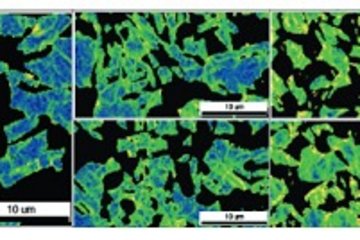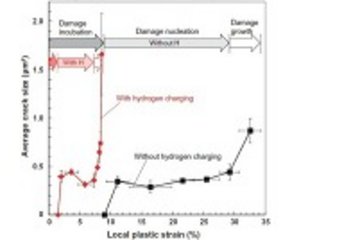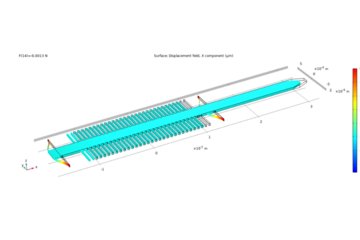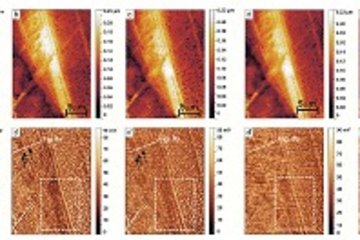All genres
101.
Journal Article
Why Tin‐Doping Enhances the Efficiency of Hematite Photoanodes for Water Splitting - The Full Picture. Advanced Functional Materials 28 (52), 1804472 (2018)
102.
Journal Article
Tailoring Thermoelectric Transport Properties of Ag-Alloyed PbTe: Effects of Microstructure Evolution. ACS Applied Materials and Interfaces 10 (45), pp. 38994 - 39001 (2018)
103.
Journal Article
Large strain synergetic material deformation enabled by hybrid nanolayer architectures. Scientific Reports 7, 11371 (2017)
104.
Journal Article
Nonagglomerated Iron Oxyhydroxide Akaganeite Nanocrystals Incorporating Extraordinary High Amounts of Different Dopants. Chemistry of Materials 29 (17), pp. 7223 - 7233 (2017)
105.
Journal Article
Simultaneous optimization of electrical and thermal transport properties of Bi0.5Sb1.5Te3 thermoelectric alloy by twin boundary engineering. Nano Energy 37, pp. 203 - 213 (2017)
106.
Journal Article
Role of Nanostructuring and Microstructuring in Silver Antimony Telluride Compounds for Thermoelectric Applications. ACS Applied Materials and Interfaces 9 (17), pp. 14779 - 14790 (2017)
107.
Journal Article
Mo-doped BiVO4 thin films – high photoelectrochemical water splitting performance achieved by a tailored structure and morphology. Sustainable Energy & Fuels 1 (8), pp. 1830 - 1846 (2017)
108.
Journal Article
Difference in linear polarization of biaxially strained InxGa1-xN alloys on nonpolar a-plane and m-plane GaN. Physical Review B 92 (24), 245202 (2015)
109.
Journal Article
Interface structure and chemistry of GaN on Ge(111). Physical Review Letters 111 (25), 256101 (2013)
110.
Talk
New insights into thermoelectric materials through length-bridging characterization. Transverse Effects in Thermoelectric Systems 819. WE-Heraeus-Seminar, Bad Honnef, Germany (2024)
111.
Talk
Triggering and tracking grain boundary phase transformation at atomic resolution. European Microscopy Conference EMC 2024, Copenhagen, Denmark (2024)
112.
Talk
In situ STEM observation of thermoelectric materials under heating and biasing conditions. The 6th joint Sino-German workshop on advanced & correlative electron microscopy of catalysts, quantum phenomena & soft matter, Bad Honnef, Germany (2024)
113.
Talk
In situ microstructural observation and electrical transport measurements of PbTe thermoelectrics by transmission electron microscopy. International Conference on Thermoelectrics ICT, Krakow, Poland (2024)
114.
Talk
Grain boundary-controlled lithiation of Li-solid solution systems for lithium metal batteries. International Operando Battery Days, Grenoble, France (2024)
115.
Talk
Multivariate statistical analysis using Hyperspy. Electron Microscopy Spring School 2024, Berlin, Germany (2024)
116.
Talk
Hematite for light induced water splitting – improving efficiency by tuning distribution of Sn dopants at the atomic scale. The International Symposium on Advanced Coatings for Energy – ISC4E 2023, Ben Guerir, Morocco (2023)
117.
Talk
Electron microscopy: Resolution and imaging contrast. DMG/DGK-AK9 Summer School “Advanced methods for the characterization of applied materials”, MPI für Kohlenforschung, Mülheim (Ruhr), Germany (2023)
118.
Talk
Operando Study on the activation of hydrogen evolution electrocatalysts. NRF-DFG meeting “Electrodes for direct sea-water splitting and microstructure based stability analyses”, Korean Institute for Energy Research, Daejeon, South Korea (2023)
119.
Talk
Sb-doping induced order to disorder transition enhances the thermal stability of NbCoSn1-xSbx half-Heusler semiconductors. The 20th International Microscopy Congress, PS-07.2. Microscopy of Semiconductor Materials and Devices, Busan, Republic of Korea (2023)
120.
Talk
In situ TEM unveils dynamic doping behavior of thermoelectric materials – Microstructure and property evolution under heating and electric biasing. International Microscopy Conference IMC20, Busan, Korea (2023)











